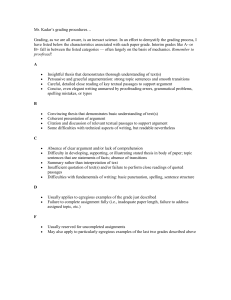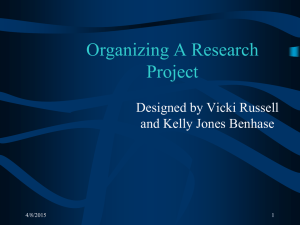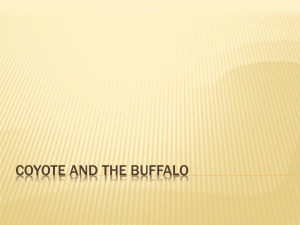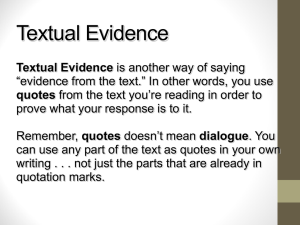Folder Stickers Transitions-FigLang-Academic Terms
advertisement
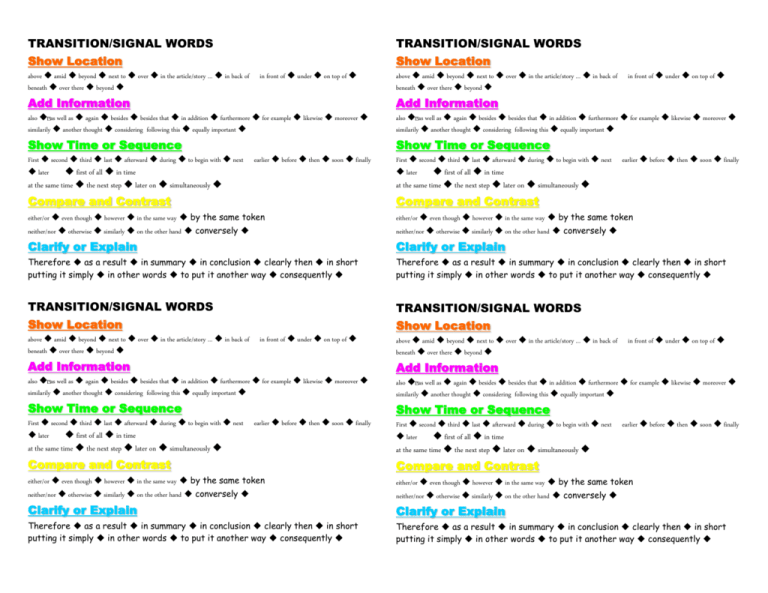
TRANSITION/SIGNAL WORDS Show Location above amid beyond next to over in the article/story … in back of beneath over there beyond TRANSITION/SIGNAL WORDS Show Location in front of under on top of above amid beyond next to over in the article/story … in back of beneath over there beyond in front of under on top of Add Information Add Information also as well as again besides besides that in addition furthermore for example likewise moreover similarily another thought considering following this equally important also as well as again besides besides that in addition furthermore for example likewise moreover similarily another thought considering following this equally important Show Time or Sequence Show Time or Sequence First second third last afterward during to begin with next later first of all in time earlier before then soon finally First second third last afterward during to begin with next later first of all in time earlier before then soon finally at the same time the next step later on simultaneously at the same time the next step later on simultaneously Compare and Contrast Compare and Contrast either/or even though however in the same way by the same token either/or even though however in the same way by the same token neither/nor otherwise similarly on the other hand conversely neither/nor otherwise similarly on the other hand conversely Clarify or Explain Clarify or Explain Therefore as a result in summary in conclusion clearly then in short putting it simply in other words to put it another way consequently Therefore as a result in summary in conclusion clearly then in short putting it simply in other words to put it another way consequently TRANSITION/SIGNAL WORDS Show Location TRANSITION/SIGNAL WORDS Show Location above amid beyond next to over in the article/story … in back of beneath over there beyond in front of under on top of above amid beyond next to over in the article/story … in back of beneath over there beyond in front of under on top of Add Information Add Information also as well as again besides besides that in addition furthermore for example likewise moreover similarily another thought considering following this equally important also as well as again besides besides that in addition furthermore for example likewise moreover similarily another thought considering following this equally important Show Time or Sequence Show Time or Sequence First second third last afterward during to begin with next later first of all in time earlier before then soon finally at the same time the next step later on simultaneously First second third last afterward during to begin with next later first of all in time earlier before then soon finally at the same time the next step later on simultaneously Compare and Contrast Compare and Contrast either/or even though however in the same way by the same token either/or even though however in the same way by the same token neither/nor otherwise similarly on the other hand conversely neither/nor otherwise similarly on the other hand conversely Clarify or Explain Clarify or Explain Therefore as a result in summary in conclusion clearly then in short putting it simply in other words to put it another way consequently Therefore as a result in summary in conclusion clearly then in short putting it simply in other words to put it another way consequently TRANSITION/SIGNAL WORDS Show Location above amid beyond next to over in the article/story … in back of in front of under on top of beneath over there beyond Add Information also as well as again besides besides that in addition furthermore for example likewise moreover similarly another thought considering following this equally important Show Time or Sequence First second third last afterward during to begin with next at the same time the next step later on simultaneously earlier before then soon finally later first of all in time Compare and Contrast either/or even though however in the same way by the same token neither/nor otherwise similarly on the other hand conversely Clarify or Explain Therefore as a result in summary in conclusion clearly then in short putting it simply in other words to put it another way consequently TRANSITION/SIGNAL WORDS Show Location above amid beyond next to over in the article/story … in back of in front of under on top of beneath over there beyond Add Information also again besides besides that in addition furthermore for example likewise moreover similarly another thought considering following this equally important Show Time or Sequence First second third last afterward during to begin with next at the same time the next step later on simultaneously earlier before then soon finally later Compare and Contrast either/or even though however in the same way by the same token neither/nor otherwise similarly on the other hand conversely Clarify or Explain Therefore as a result in summary in conclusion clearly then in short putting it simply in other words to put it another way consequently first of all in time Figurative Language: Definition / Example Figurative Language: Definition / Example Cliché The repetition of initial consonant sounds in two or more neighboring words. The wild and woolly walrus waits and wonders when we'll walk by. A brief reference to something real or in literature. She was no Scrooge, but she seldom purchased anything except the bare necessities. A resemblance of sound in words or syllables holy & stony; fleet feet sweep by sleeping geese A word or phrase that has become overly familiar or commonplace No pain, no gain. Hyperbole Big exaggeration, usually with humor Idiom The language peculiar to a group of people Metaphor Comparing two things by using one kind of object or using in place of another to suggest the likeness between them Her hair was silk. Naming a thing or an action by imitating the sound associated with it. buzz, hiss, woof A figure of speech that combines two contradictory terms. open secret, seriously funny, freezer burn Repeat a word or phrase to make a point. A child learns to love, a child learns to live. Oxymoron Giving something human qualities The stuffed bear smiled as the little boy hugged him close. A figure of speech comparing two unlike things that is often introduced by like or as The sun is like a yellow ball of fire in the sky. Something that stands for more then itself. red roses, phoenix (rebirth), fire (anger or safety) Personification Alliteration Allusion Assonance Onomatopoeia Oxymoron Repitition Personification Simile Symbol/-ism mile-high ice-cream cones She sings at the top of her lungs. Figurative Language: Definition / Example Cliché The repetition of initial consonant sounds in two or more neighboring words. The wild and woolly walrus waits and wonders when we'll walk by. A brief reference to something real or in literature. She was no Scrooge, but she seldom purchased anything except the bare necessities. A resemblance of sound in words or syllables holy & stony; fleet feet sweep by sleeping geese A word or phrase that has become overly familiar or commonplace No pain, no gain. Hyperbole Big exaggeration, usually with humor Idiom The language peculiar to a group of people Metaphor Comparing two things by using one kind of object or using in place of another to suggest the likeness between them Her hair was silk. Naming a thing or an action by imitating the sound associated with it. buzz, hiss, woof Alliteration Allusion Assonance Onomatopoeia Repetition Simile Symbol/-ism Cliché Hyperbole Big exaggeration, usually with humor Idiom The language peculiar to a group of people Metaphor Comparing two things by using one kind of object or using in place of another to suggest the likeness between them Her hair was silk. Naming a thing or an action by imitating the sound associated with it. buzz, hiss, woof A figure of speech that combines two contradictory terms. open secret, seriously funny, freezer burn Repeat a word or phrase to make a point. A child learns to love, a child learns to live. Oxymoron Giving something human qualities The stuffed bear smiled as the little boy hugged him close. A figure of speech comparing two unlike things that is often introduced by like or as The sun is like a yellow ball of fire in the sky. Something that stands for more then itself. red roses, phoenix (rebirth), fire (anger or safety) Personification Allusion Assonance Onomatopoeia Oxymoron Repetition Personification Simile Symbol/-ism She sings at the top of her lungs. A figure of speech that combines two contradictory terms. open secret, seriously funny, freezer burn Repeat a word or phrase to make a point. A child learns to love, a child learns to live. Giving something human qualities The stuffed bear smiled as the little boy hugged him close. A figure of speech comparing two unlike things that is often introduced by like or as The sun is like a yellow ball of fire in the sky. Something that stands for more then itself. red roses, phoenix (rebirth), fire (anger or safety) Figurative Language: Definition / Example The repetition of initial consonant sounds in two or more neighboring words. The wild and woolly walrus waits and wonders when we'll walk by. A brief reference to something real or in literature. She was no Scrooge, but she seldom purchased anything except the bare necessities. A resemblance of sound in words or syllables holy & stony; fleet feet sweep by sleeping geese A word or phrase that has become overly familiar or commonplace No pain, no gain. Alliteration mile-high ice-cream cones mile-high ice-cream cones She sings at the top of her lungs. Cliché The repetition of initial consonant sounds in two or more neighboring words. The wild and woolly walrus waits and wonders when we'll walk by. A brief reference to something real or in literature. She was no Scrooge, but she seldom purchased anything except the bare necessities. A resemblance of sound in words or syllables holy & stony; fleet feet sweep by sleeping geese A word or phrase that has become overly familiar or commonplace No pain, no gain. Hyperbole Big exaggeration, usually with humor Idiom The language peculiar to a group of people Metaphor Comparing two things by using one kind of object or using in place of another to suggest the likeness between them Her hair was silk. Naming a thing or an action by imitating the sound associated with it. buzz, hiss, woof Alliteration Allusion Assonance Onomatopoeia Repetition Simile Symbol/-ism mile-high ice-cream cones She sings at the top of her lungs. A figure of speech that combines two contradictory terms. open secret, seriously funny, freezer burn Repeat a word or phrase to make a point. A child learns to love, a child learns to live. Giving something human qualities The stuffed bear smiled as the little boy hugged him close. A figure of speech comparing two unlike things that is often introduced by like or as The sun is like a yellow ball of fire in the sky. Something that stands for more then itself. red roses, phoenix (rebirth), fire (anger or safety) A Few Important Academic Terms A Few Important Academic Terms Analysis/Analyze When you analyze a text, you give it meaning beyond what the text tells you directly. Analysis/Analyze When you analyze a text, you give it meaning beyond what the text tells you directly. Argue/Argument Argue/Argument Describe Academic argument states a position or claim about an issue and justifies this claim with specific evidence. It is impersonal (no I, me, my, etc.), logical, & evidence-based). To give a clear, detailed picture of something in a description, by answering the questions: What does or did this look like, sound like, feel like? Describe Academic argument states a position or claim about an issue and justifies this claim with specific evidence. It is impersonal (no I, me, my, etc.), logical, & evidence-based). To give a clear, detailed picture of something in a description, by answering the questions: What does or did this look like, sound like, feel like? Discuss To consider all sides of a question with a fairly open mind. Discuss To consider all sides of a question with a fairly open mind. Evaluate Answer the question: What is the value, truth or quality of this text, movie, song, etc. Evaluate Answer the question: What is the value, truth or quality of this text, movie, song, etc. Expository Explains something to the audience. Most textbooks use expository text. Expository Explains something to the audience. Most textbooks use expository text. Interpret Answer the question: What is the meaning or significance of this text or event? Interpret Answer the question: What is the meaning or significance of this text or event? Narrative Writing that tells a story or gives information is a story-like format. Narrative Writing that tells a story or gives information is a story-like format. Paraphrase You use roughly the same number of words to put someone else’s words into your own. Paraphrase You use roughly the same number of words to put someone else’s words into your own. Quote When you quote a source, you use someone else’s exact words and enclose them in quotation marks to show they are borrowed. “…..” Quote When you quote a source, you use someone else’s exact words and enclose them in quotation marks to show they are borrowed. “…..” React Respond to text by bringing in your own experiences and prior knowledge. React Respond to text by bringing in your own experiences and prior knowledge. Summarize In your own words, state the main idea and most important details of a text. Summarize In your own words, state the main idea and most important details of a text. Synthesize To blend information from many sources; determine which "fits together." Synthesize To blend information from many sources; determine which "fits together." Textual Evidence Evidence from a text used to support an argument/position. It is provided in the form of quotation, paraphrase, and/or description. Textual Evidence Evidence from a text used to support an argument/position. It is provided in the form of quotation, paraphrase, and/or description. Thesis Statement A thesis statement declares what you believe and what you intend to prove. Thesis Statement A thesis statement declares what you believe and what you intend to prove. A Few Important Academic Terms A Few Important Academic Terms Analysis/Analyze When you analyze a text, you give it meaning beyond what the text tells you directly. Analysis/Analyze When you analyze a text, you give it meaning beyond what the text tells you directly. Argue/Argument Argue/Argument Describe Academic argument states a position or claim about an issue and justifies this claim with specific evidence. It is impersonal (no I, me, my, etc.), logical, & evidence-based). To give a clear, detailed picture of something in a description, by answering the questions: What does or did this look like, sound like, feel like? Describe Academic argument states a position or claim about an issue and justifies this claim with specific evidence. It is impersonal (no I, me, my, etc.), logical, & evidence-based). To give a clear, detailed picture of something in a description, by answering the questions: What does or did this look like, sound like, feel like? Discuss To consider all sides of a question with a fairly open mind. Discuss To consider all sides of a question with a fairly open mind. Evaluate Answer the question: What is the value, truth or quality of this text, movie, song, etc. Evaluate Answer the question: What is the value, truth or quality of this text, movie, song, etc. Expository Explains something to the audience. Most textbooks use expository text. Expository Explains something to the audience. Most textbooks use expository text. Interpret Answer the question: What is the meaning or significance of this text or event? Interpret Answer the question: What is the meaning or significance of this text or event? Narrative Writing that tells a story or gives information is a story-like format. Narrative Writing that tells a story or gives information is a story-like format. Paraphrase You use roughly the same number of words to put someone else’s words into your own. Paraphrase You use roughly the same number of words to put someone else’s words into your own. Quote When you quote a source, you use someone else’s exact words and enclose them in quotation marks to show they are borrowed. “…..” Quote When you quote a source, you use someone else’s exact words and enclose them in quotation marks to show they are borrowed. “…..” React Respond to text by bringing in your own experiences and prior knowledge. React Respond to text by bringing in your own experiences and prior knowledge. Summarize In your own words, state the main idea and most important details of a text. Summarize In your own words, state the main idea and most important details of a text. Synthesize To blend information from many sources; determine which "fits together." Synthesize To blend information from many sources; determine which "fits together." Textual Evidence Evidence from a text used to support an argument/position. It is provided in the form of quotation, paraphrase, and/or description. Textual Evidence Evidence from a text used to support an argument/position. It is provided in the form of quotation, paraphrase, and/or description. Thesis Statement A thesis statement declares what you believe and what you intend to prove. Thesis Statement A thesis statement declares what you believe and what you intend to prove. Show Your Writing ASSETs Responding to Open-Ended Questions Show Your Writing ASSETs Responding to Open-Ended Questions A Answer the question: STEM + ANSWER A Answer the question: STEM + ANSWER S 1 SUPPORT #1 S 1 SUPPORT #1 S 2 SUPPORT #2 S 2 SUPPORT #2 Topic or Main Idea Sentence T + 1st Supporting Idea: a) b) Give your 1st supporting idea. Use TEXTUAL EVIDENCE and explain how that is relevant. T + 2nd Supporting Idea: a) b) Give your 2nd supporting idea. Use TEXTUAL EVIDENCE and explain how that is relevant. T + Conclusion: E EXPLAIN or EXTEND T TRANSITIONS Throughout T + 1st Supporting Idea: e) f) Give your 1st supporting idea. Use TEXTUAL EVIDENCE and explain how that is relevant. T + 2nd Supporting Idea: e) f) Give your 2nd supporting idea. Use TEXTUAL EVIDENCE and explain how that is relevant. T + Conclusion: Tie your ideas up by showing how you have proved your answer in your topic sentence. E EXPLAIN or EXTEND Well-placed transition words or phrases enhance the meaning of your response. In this paragraph, you should have 3 transition words or phrases. T TRANSITIONS Throughout a) Topic or Main Idea Sentence c) Tie your ideas up by showing how you have proved your answer in your topic sentence. Well-placed transition words or phrases enhance the meaning of your response. In this paragraph, you should have 3 transition words or phrases. Show Your Writing ASSETs Responding to Open-Ended Questions Show Your Writing ASSETs Responding to Open-Ended Questions A Answer the question: STEM + ANSWER A Answer the question: STEM + ANSWER S 1 SUPPORT #1 S 1 SUPPORT #1 S 2 SUPPORT #2 S 2 SUPPORT #2 Topic or Main Idea Sentence T + 1st Supporting Idea: c) d) Give your 1st supporting idea. Use TEXTUAL EVIDENCE and explain how that is relevant. T + 2nd Supporting Idea: c) d) Give your 2nd supporting idea. Use TEXTUAL EVIDENCE and explain how that is relevant. T + Conclusion: E EXPLAIN or EXTEND T TRANSITIONS Throughout T + 1st Supporting Idea: g) h) Give your 1st supporting idea. Use TEXTUAL EVIDENCE and explain how that is relevant. T + 2nd Supporting Idea: g) h) Give your 2nd supporting idea. Use TEXTUAL EVIDENCE and explain how that is relevant. T + Conclusion: Tie your ideas up by showing how you have proved your answer in your topic sentence. E EXPLAIN or EXTEND Well-placed transition words or phrases enhance the meaning of your response. In this paragraph, you should have 3 transition words or phrases. T TRANSITIONS Throughout b) Topic or Main Idea Sentence d) Tie your ideas up by showing how you have proved your answer in your topic sentence. Well-placed transition words or phrases enhance the meaning of your response. In this paragraph, you should have 3 transition words or phrases. Log-on ID Password Log-on ID Computer: READ 180: Edmodo: VocabularyCity: Kidblog: Computer: READ 180: Edmodo: VocabularyCity: Kidblog: My LEXILE IMPROVEMENT My LEXILE IMPROVEMENT 1600L 1600L 1500L 1500L 1400L 1400L 1300L 1300L 1200L 1200L 1100L 1100L 1000L 1000L 900L 900L 800L 800L 700L 700L 600L 600L 500L 500L 400L 400L 300L 300L 200L 200L 100L 100L BR BR Sept. ‘12 My Lexile: My Goal: End MP1 End MP2 End MP3 EOY ‘13 Sept. ‘12 My Lexile: My Goal: End MP1 Password End MP2 End MP3 EOY ‘13


